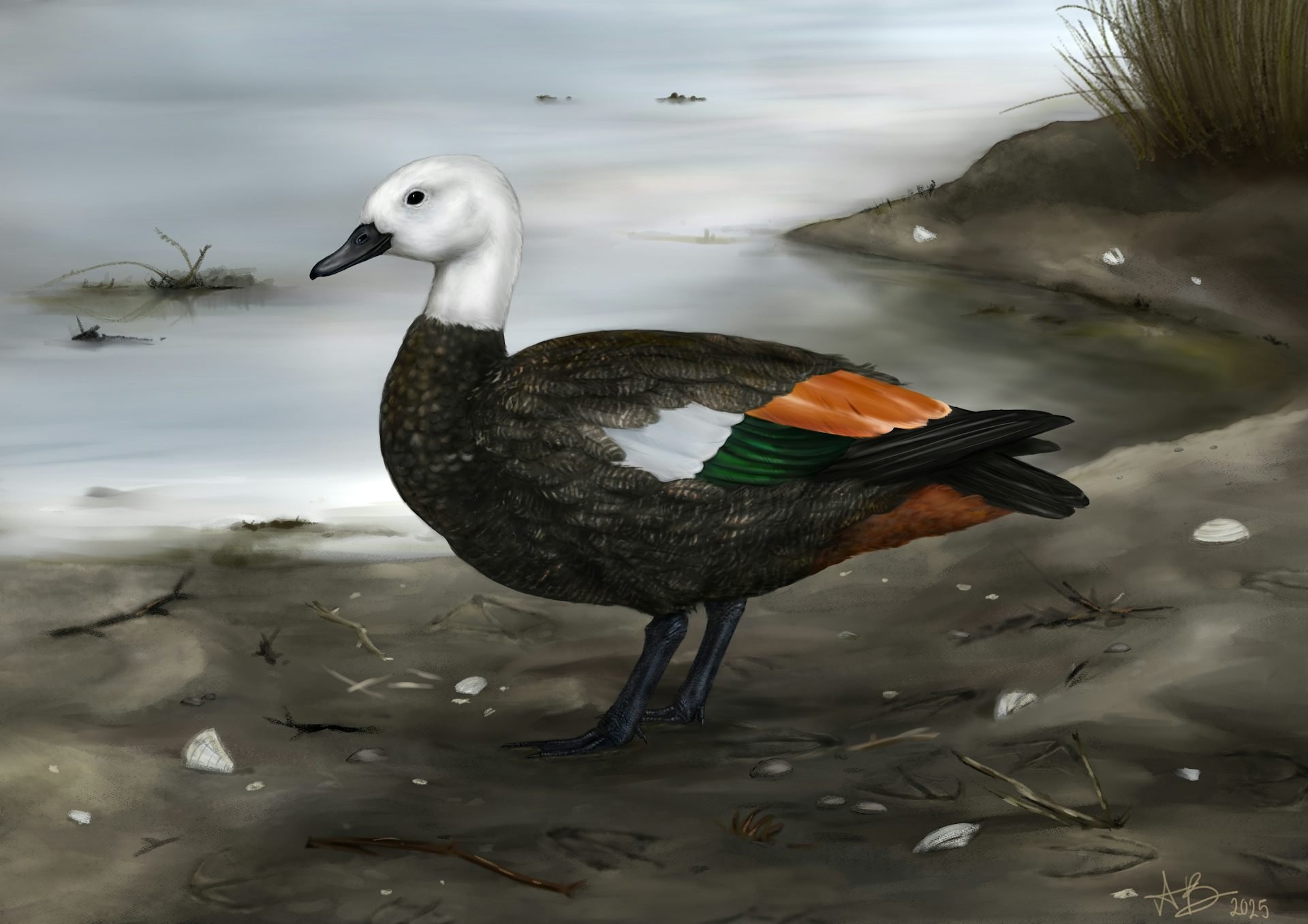
Ancient DNA and an analysis of the shape of the bones in the now extinct Rēkohu shelduck, from the Chatham Islands, show they were most closely related to the pūtangitangi paradise shelduck, which is still widespread in New Zealand.
But new research, co-led by University of Otago Palaeogenetics Laboratory director Associate Prof Nic Rawlence, shows Rēkohu shelducks evolved into quite a different bird on the Chatham Islands.
And given another 1000 years or so, it would have eventually become flightless, he said.
"The Rēkohu shelduck evolved shorter, more robust wings and longer leg bones, indicating it was going down the pathway towards flightlessness.
"These changes were due to a range of factors, such as an abundance of food, lack of ground-dwelling predators, it was also incredibly isolated, and the really windy conditions there meant flying was not the preferred mode of transport."
Co-lead author and fellow Otago Palaeogenetics Laboratory researcher Dr Pascale Lubbe said in a case of "use it or lose it, the wings start to reduce".
"Flight is energetically expensive, so if you don’t have to fly, why bother," she said.
"The longer leg bones are more robust to support more muscle and create increased force for take-off — necessary when you have smaller wings."
Assoc Prof Rawlence said over time, the Rēkohu shelduck went down its own unique path of evolution.
"It’s what we call the island syndrome.
"If they hadn’t gone extinct, they would have probably become flightless."
He said the Rēkohu shelducks arrived on the Chathams about 390,000 years ago, but went extinct prior to the arrival of Europeans and Maori, specifically Ngāti Mutunga, on the islands in the 1800s.
"It went extinct due to over-hunting from subsistence food gathering practices, habitat modification and predation from kiori — the Pacific rat."
The study was completed with the help of members of the Hokotehi Moriori Trust, who are tchieki (guardians) of the plants and animals on Rēkohu Chatham Islands.
Trust chief executive officer Levi Lanauze said the discovery was great for Rēkohu as a whole, and helped connect imi (tribe) Moriori with miheke (treasure) of the past, and added to the islands’ rich history as a home to many species of waterfowl before human settlement.











